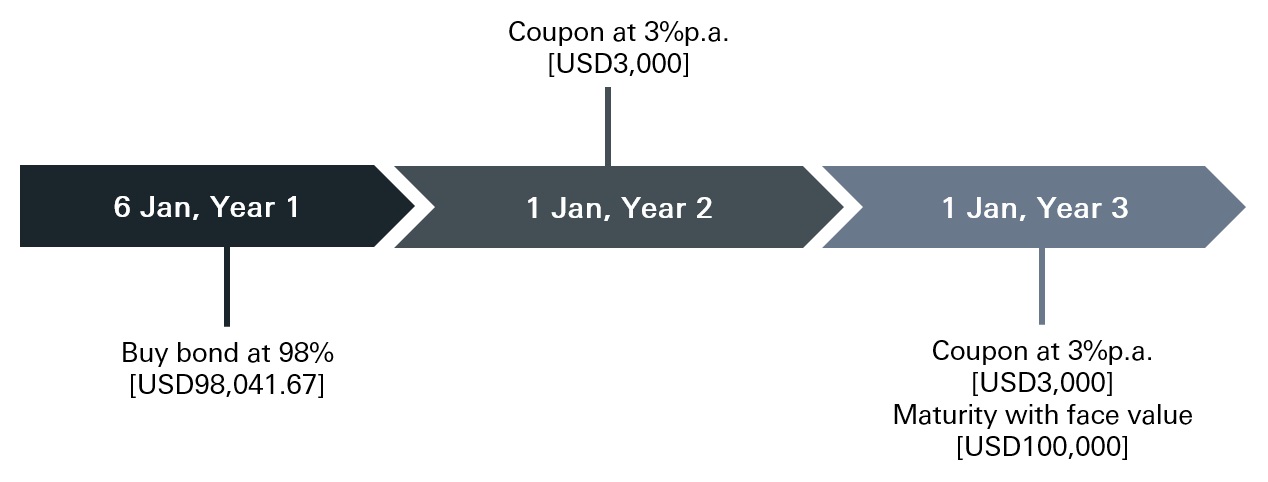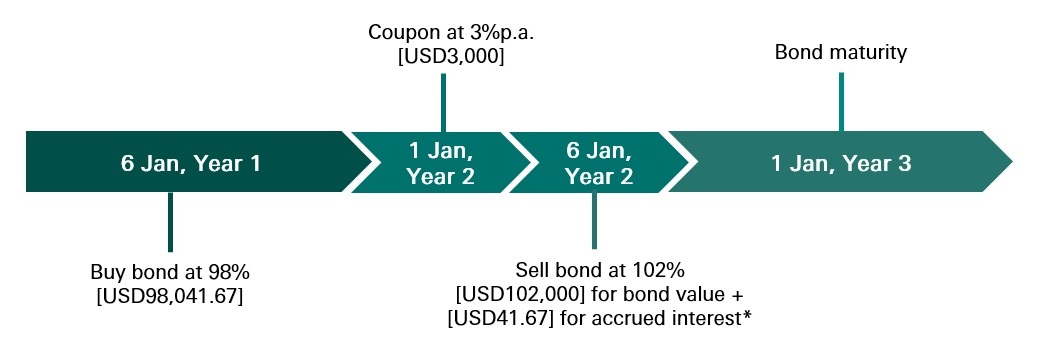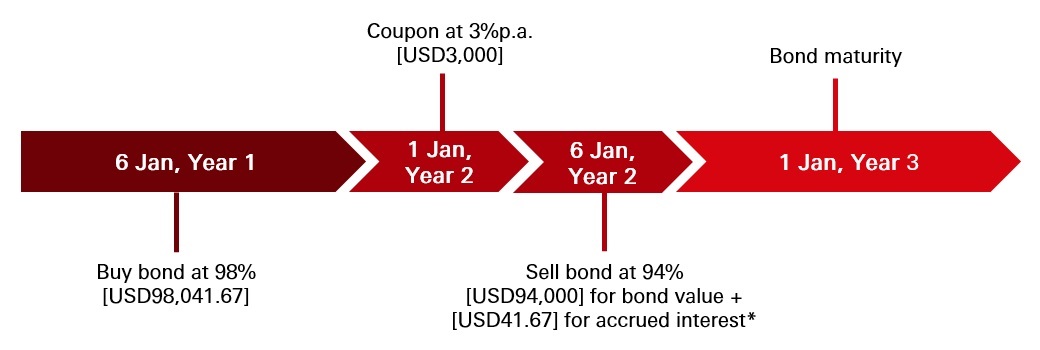What is a bond / CD?
It's important to have some cash savings for emergencies. But adding bonds and certificates of deposit (CDs) to your portfolio can give you a better return than if you left all your cash in a savings account. Here's what we have to offer:
- Bonds, issued by governments including China, the US and Hong Kong, local quasi-government bodies, supranationals and well-known corporations around the world.
- CDs, issued by different high credit quality financial institutions like banks.
- Initial Public Offerings (IPOs) for various bonds and CDs.
For more information, access IFEC's The Chin Family website.
How do bonds/CDs work? – illustrative examples
| Face value | Offer price | Coupon rate | Coupon frequency | Maturity date | Initial payment |
|---|---|---|---|---|---|
| USD100,000 | 98% | 3% | Annually | 1 Jan, Year 3 | purchase amount USD98,000 + accrued interest* USD41.67 = USD98,041.67 |
| Face value | USD100,000 |
|---|---|
| Offer price | 98% |
| Coupon rate | 3% |
| Coupon frequency | Annually |
| Maturity date | 1 Jan, Year 3 |
| Initial payment | purchase amount USD98,000 + accrued interest* USD41.67 = USD98,041.67 |
*Accrued interest : USD100,000 x 3% x 5 days/360 days = USD41.67 for receiving/releasing the bond holding 5 days after last interest payment date



